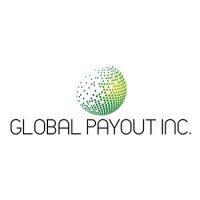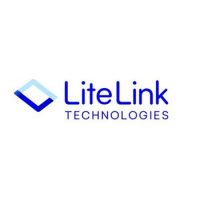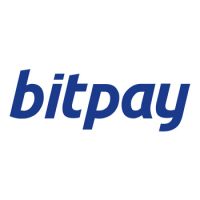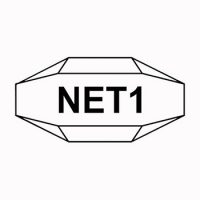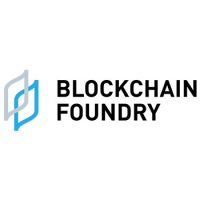Blockchain Press Releases
LUXASIA bags double hat-trick with third win at Deloitte’s Best Managed Companies Singapore and three wins at Retail Asia Awards 2023

SINGAPORE, July 17, 2023 /PRNewswire/ — LUXASIA has been named one of Singapore’s Best Managed Companies by Deloitte for the third time running on 28 Jun 2023. In parallel, it also took home three wins at the Retail Asia Awards 2023 on 15 Jun 2023, namely Luxury Beauty Retailer of the Year for Singapore, for Philippines, and Brand Store of the Year for Indonesia. These awards are an encouraging affirmation of the company’s achievements and progress, arriving timely right in the middle of its rigorous three-year strategic growth plan culminating in end 2024.
Experience the full interactive Multichannel News Release here: https://www.multivu.com/players/English/9185251-luxasia-deloitte-singapore-best-managed-companies/
Emerging from Deloitte’s strict assessment, the judging panel commended LUXASIA for its clear and strategic market penetration plan for future growth, focus on technology to improve operational efficiency and customer experience, as well as its commitment to enhancing talent acquisition, human capital management, and brand visibility. Since their last win, the Group has expanded its brand portfolio through major partnerships with the likes of Dolce & Gabbana, Huda Beauty, Laura Mercier, Olaplex, and more. Furthermore, LUXASIA continues outdoing itself by formulating a proprietary retail excellence framework called RX, aimed at bringing consistent and best-in-class retail operations and customer service quality, enabled by technology, quality control, and audit processes.
These efforts also paved the way for its triple-win at Retail Asia Awards 2023. In the past year, LUXASIA has successfully launched boutiques for the likes of Diptyque, Creed, and Maison Francis Kurkdjian, and many stores and counters for other brands, bolstering the Group’s position as the largest beauty player by market share in Singapore. In the Philippines, LUXASIA has launch of its own multi-brand retail concept called SkinSmart to expand market dominance beyond fragrance into make-up, haircare, and skincare categories. Finally, in Indonesia, the Group spearheads a milestone expansion into a category adjacent to its luxury beauty core – luxury lifestyle. In partnership with a leading global consumer-tech company, LUXASIA launched 16 direct-to-consumer points-of-sales including a state-of-the-art boutique and the brand’s official website. Furthermore, the team had developed a technology solution to accurately measures retail traffic and consumers’ responses to campaigns, enabling iterative sharpening of mechanics.
In response, Group CEO Dr Wolfgang Baier enthuses, “We are very honored by these hat-trick wins. It is a solid affirmation of our strategy, transformation, and growth. A big THANK YOU to our amazing team of 2700 talents across Asia Pacific for your excellence and all our esteemed brand partners for your trust. Let us continue soaring together!”
Media Contact
Brynner Janato
+65 6488 8880
[email protected]
Photo – https://mma.prnewswire.com/media/2154242/Luxasia_image.jpg
Logo – https://mma.prnewswire.com/media/1571746/LUXASIA_Logo.jpg
![]() View original content:https://www.prnewswire.co.uk/news-releases/luxasia-bags-double-hat-trick-with-third-win-at-deloittes-best-managed-companies-singapore-and-three-wins-at-retail-asia-awards-2023-301877724.html
View original content:https://www.prnewswire.co.uk/news-releases/luxasia-bags-double-hat-trick-with-third-win-at-deloittes-best-managed-companies-singapore-and-three-wins-at-retail-asia-awards-2023-301877724.html

Blockchain Press Releases
Bybit Surpasses 70 Million Users, Reinforces Commitment to Transparency and Institutional Growth

DUBAI, UAE, May 9, 2025 /PRNewswire/ — Bybit, the world’s second-largest cryptocurrency exchange by trading volume, today announced it has surpassed 70 million registered users, a milestone that highlights the platform’s sustained global growth and deepening trust among both retail and institutional clients. This achievement underscores Bybit’s robust market presence and its steadfast commitment to security, compliance, and product innovation.
“Reaching 70 million users is more than a number—it’s a testament to the trust our global community places in us,” said Ben Zhou, co-founder and CEO of Bybit. “We are doubling down on compliance, institutional-grade infrastructure, and user-centric innovation to ensure everyone—from first-time traders to global institutions—can access the future of finance with confidence.”
Strengthening Global Compliance and Regulatory Engagement
Bybit continues to expand its global compliance framework, working closely with regulators around the world. Most recently, Bybit held strategic discussions with Vietnam’s Ministry of Finance, contributing to the country’s regulatory sandbox initiative by sharing expertise in KYC, AML, and international best practices.
Bybit has also made key progress in major jurisdictions, including the United Arab Emirates, further demonstrating its commitment to regulatory alignment and operational transparency.
Accelerating Institutional Growth
Bybit is seeing rapid growth among institutional clients, driven by high-performance trading infrastructure, advanced risk controls, and strategic partnerships. The integration with Zodia Custody—a leading provider of institutional-grade custody and off-venue settlement solutions—reflects Bybit’s ongoing efforts to meet the needs of sophisticated investors with robust, compliant offerings.
Pioneering Web3 Integration and Real-World Utility
Bybit continues to lead in practical Web3 innovation. The Bybit Card, now used by nearly 2 million people, enables everyday crypto spending, while Bybit Pay streamlines on-chain and off-chain transactions for both users and merchants.
In line with its user-first philosophy, Bybit is also leveraging artificial intelligence to enhance trading, research, and support services. CryptoLens, an in-house AI analytics tool, offers users deep insights into token fundamentals, community activity, social trends, and tokenomics—even for projects not listed on the platform. TradeGPT, an AI agent trained on Bybit’s proprietary data, delivers rapid price action summaries and technical analysis, helping traders make smarter decisions. Complementing these innovations, an AI Support Agent enhances customer service by improving response efficiency and user experience across the platform.
Bridging Traditional Finance and the Future of Digital Assets
Bybit remains committed to its role as #TheCryptoArk—a safe, trusted bridge from traditional finance into the world of Web3. Through intuitive products, regulatory collaboration, and cutting-edge technology, Bybit empowers users of all levels to navigate and thrive in the digital asset ecosystem.
“We’re building the infrastructure for the next era of finance,” Ben added. “By championing regulation, professionalism, and a relentless user-first approach, we’re shaping a safer, more inclusive, and more empowering financial future for all.”
#Bybit / #TheCryptoArk
About Bybit
Bybit is the world’s second-largest cryptocurrency exchange by trading volume, serving a global community of over 70 million users. Founded in 2018, Bybit is redefining openness in the decentralized world by creating a simpler, open, and equal ecosystem for everyone. With a strong focus on Web3, Bybit partners strategically with leading blockchain protocols to provide robust infrastructure and drive on-chain innovation. Renowned for its secure custody, diverse marketplaces, intuitive user experience, and advanced blockchain tools, Bybit bridges the gap between TradFi and DeFi, empowering builders, creators, and enthusiasts to unlock the full potential of Web3. Discover the future of decentralized finance at Bybit.com.
For more details about Bybit, please visit Bybit Press
For media inquiries, please contact: [email protected]
For updates, please follow: Bybit’s Communities and Social Media
Discord | Facebook | Instagram | LinkedIn | Reddit | Telegram | TikTok | X | Youtube
Logo – https://mma.prnewswire.com/media/2267288/Logo.jpg
![]() View original content:https://www.prnewswire.co.uk/news-releases/bybit-surpasses-70-million-users-reinforces-commitment-to-transparency-and-institutional-growth-302451104.html
View original content:https://www.prnewswire.co.uk/news-releases/bybit-surpasses-70-million-users-reinforces-commitment-to-transparency-and-institutional-growth-302451104.html

Blockchain Press Releases
Unleashing the Power of Futures Combo Bots on Bybit: Leveling up Futures Trading with More Rewards

DUBAI, UAE, May 9, 2025 /PRNewswire/ — Bybit, the world’s second-largest cryptocurrency exchange by trading volume, Futures Combo Carnival, a month-long trading event rewarding both new and experienced Futures Combo traders with multiple rewards tracks. Trading thresholds start at 300 USDT with rewards of up to 500 USDT in prizes weekly.
The largest Futures Combo campaign on Bybit to date, the Carnival gives traders even more reasons to make their futures trading journey hassle-free and more rewarding. Bot-enabled automated trading is becoming the norm among strategic traders in a turbulent market, where no traders can afford manmade mistakes or delays in execution.
Bybit’s Futures Combo Bot is a powerful tool for streamlining users’ futures trading experience, empowering them to build portfolios and rebalance positions across multiple futures contracts. The innovative solution allows traders to set up a Bot within minutes, minimizing manual management of complex trading strategies, and achieving both efficiency and flexibility when managing combos of futures contracts.
From now to Jun. 9, 2025, eligible Bybit users may take part in two events with a welcome bonus for first-time users:
- The Combo Battle offers newcomers who achieve a trading volume of 300 USDT an immediate 5 USDT Bot Bonus on a first-come, first-served basis, while experienced traders can earn lucky draw tickets by reaching volume milestones of 1,000 USDT and 2,500 USDT respectively using Bybit’s Futures Combo Bot.
- The Combo Challenge invites Mandarin-speaking Key Opinion Leaders to create and share their trading strategies on social media using the hashtag #ComboChallenge, with three weekly winners receiving 500 USDT each.
Bybit is committed to making futures trading more accessible to users looking to diversify their trading strategies. With rewards designed for both newcomers and experienced traders, this event strengthens community engagement while supporting users wherever they are on their trading journey. For more details and terms and conditions, users may visit: Bybit Futures Combo Carnival
#Bybit / #TheCryptoArk
About Bybit
Bybit is the world’s second-largest cryptocurrency exchange by trading volume, serving a global community of over 60 million users. Founded in 2018, Bybit is redefining openness in the decentralized world by creating a simpler, open and equal ecosystem for everyone. With a strong focus on Web3, Bybit partners strategically with leading blockchain protocols to provide robust infrastructure and drive on-chain innovation. Renowned for its secure custody, diverse marketplaces, intuitive user experience, and advanced blockchain tools, Bybit bridges the gap between TradFi and DeFi, empowering builders, creators, and enthusiasts to unlock the full potential of Web3. Discover the future of decentralized finance at Bybit.com.
For more details about Bybit, please visit Bybit Press
For media inquiries, please contact: [email protected]
For updates, please follow: Bybit’s Communities and Social Media
Discord | Facebook | Instagram | LinkedIn | Reddit | Telegram | TikTok | X | Youtube

Logo – https://mma.prnewswire.com/media/2267288/Logo.jpg
![]() View original content:https://www.prnewswire.co.uk/news-releases/unleashing-the-power-of-futures-combo-bots-on-bybit-leveling-up-futures-trading-with-more-rewards-302451105.html
View original content:https://www.prnewswire.co.uk/news-releases/unleashing-the-power-of-futures-combo-bots-on-bybit-leveling-up-futures-trading-with-more-rewards-302451105.html

Blockchain Press Releases
Bybit Unifies Loan Products to Enhance Capital Efficiency for Crypto Traders

DUBAI, UAE, May 9, 2025 /PRNewswire/ — Bybit, the world’s second-largest cryptocurrency exchange by trading volume, is enhancing the user experience and capital efficiency of its lending products by integrating Crypto Loans (flexible loans) and Fixed Rate Loans into a single, streamlined interface.
The integration introduces a unified platform for both loan types, enabling users to compare, manage, and optimize their borrowing strategies with greater ease. All loan products are now accessible under the Crypto Loans page, with a redesigned layout that prioritizes usability and transparency.
“Our goal is to simplify how users interact with our lending products while enhancing their capital flexibility,” said Emily Bao, Head of Spot at Bybit. “By consolidating management tools and aligning risk models, we’re giving our users more control and clarity over their borrowing activity.”
Key upgrades include:
- Unified Cross Margin Model: Both flexible and fixed-term loans will now operate under a shared cross-margin system, allowing users to benefit from consolidated Loan-to-Value (LTV) ratios — set at 80% (initial), 85% (margin call), and 92% (liquidation).
- Shared Collateral: Collateral can now be used interchangeably across both loan types, enabling more agile capital deployment.
- Tiered Collateral Ratios: All supported assets will follow a tiered collateral system, reflecting each asset’s risk profile — consistent with the structure previously applied to Fixed Rate Loans.
- Updated Interest Calculation: Interest will be calculated hourly using a compounding method: total debt (principal + accrued interest) multiplied by the hourly interest rate.
Existing loan orders will remain unaffected, continuing under their original terms and conditions. For users seeking further information, detailed guides on both Fixed Rate Loans and Crypto Loans are available via the Bybit Help Center.
This strategic move reaffirms Bybit’s commitment to innovation and user empowerment in the evolving digital asset economy.
#Bybit / #TheCryptoArk
About Bybit
Bybit is the world’s second-largest cryptocurrency exchange by trading volume, serving a global community of over 60 million users. Founded in 2018, Bybit is redefining openness in the decentralized world by creating a simpler, open and equal ecosystem for everyone. With a strong focus on Web3, Bybit partners strategically with leading blockchain protocols to provide robust infrastructure and drive on-chain innovation. Renowned for its secure custody, diverse marketplaces, intuitive user experience, and advanced blockchain tools, Bybit bridges the gap between TradFi and DeFi, empowering builders, creators, and enthusiasts to unlock the full potential of Web3. Discover the future of decentralized finance at Bybit.com.
For more details about Bybit, please visit Bybit Press
For media inquiries, please contact: [email protected]
For updates, please follow: Bybit’s Communities and Social Media
Discord | Facebook | Instagram | LinkedIn | Reddit | Telegram | TikTok | X | Youtube

Photo – https://mma.prnewswire.com/media/2683407/Bybit_Unifies_Loan_Products_Enhance_Capital_Efficiency_Crypto_Traders.jpg
Logo – https://mma.prnewswire.com/media/2267288/5310253/Logo.jpg
![]() View original content:https://www.prnewswire.co.uk/news-releases/bybit-unifies-loan-products-to-enhance-capital-efficiency-for-crypto-traders-302451043.html
View original content:https://www.prnewswire.co.uk/news-releases/bybit-unifies-loan-products-to-enhance-capital-efficiency-for-crypto-traders-302451043.html

-

 Blockchain Press Releases3 days ago
Blockchain Press Releases3 days agoHTX Premieres USD1 Stablecoin Globally, Partnering with World Liberty Financial to Forge a New Era of Decentralized Economy
-
Blockchain2 days ago
Colb Asset SA Raises $7.3 Million in Oversubscribed Round to Bring Pre-IPO Giants to Blockchain
-

 Blockchain6 days ago
Blockchain6 days agoUnitedStaking.com Launches Advanced Crypto Staking Platform with Global Reach and Real-World Impact
-

 Blockchain2 days ago
Blockchain2 days agoBlocks & Headlines: Today in Blockchain – May 7, 2025 | Coinbase, Riot Games, Curve DAO, Litecoin, AR.IO
-

 Blockchain Press Releases3 days ago
Blockchain Press Releases3 days agoJuCoin made a global impact at TOKEN2049 Dubai, advancing its ecosystem with the “Peak Experience” vision and JuChain’s robust tech.
-

 Blockchain Press Releases2 days ago
Blockchain Press Releases2 days agoGRVT Launches Biggest Ever Trading Competition for Retail Traders, Offering Up to 175,000 USDT in Prizes
-

 Blockchain Press Releases1 day ago
Blockchain Press Releases1 day agoHTX and Justin Sun Launch $6M Mars Program Special Edition, Offering One User a Historic Space Journey
-

 Blockchain4 days ago
Blockchain4 days agoBlocks & Headlines: Today in Blockchain – May 5, 2025 – Arkham, Blockchair, Worldcoin, Maldives






